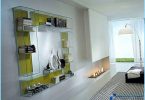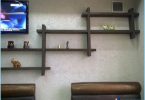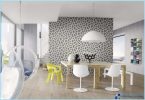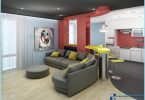The contents
Paintings have been used as a home decoration. This is a simple and elegant attributes that allow you to completely change the look of the space, focusing on yourself. However, for maximum results from the pictures it is necessary correctly to place it, achieving the optimal location and effect on surrounding area.
The problem is not so much the location of the creative attribute, as its fasteners. After all, a good picture needs to sit securely in place, leaving an impression of essential parts of the room. To this effect there are several methods of fastening, which now will be discussed.
How to hang a picture ↑
There are several methods of mounting pictures on the wall. They differ in the reliability of fastening, fixing, complexity and many other items. Therefore, it is necessary to choose the most suitable option to suit your needs and requirements.
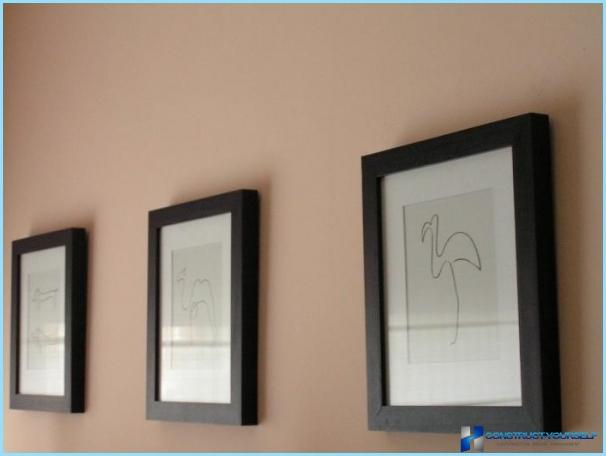
Available methods of fastening can be divided into two options:
- light;
- complex.
These methods are enough to carry out the installation of any painting, but any way you should choose depending on the surface for a fastener, the weight and size of the picture, as well as other factors.
So, let us examine the available types of fastener patterns. Here it is worth considering various factors that apply to your room. This will allow you to achieve optimal results in the Assembly of such an element of decor.
Easy methods fastener paintings ↑
This homemade approach, allowing you to easily set different pictures on the wall. It differs in that it doesn’t need special tools or skills, it is available to everyone. But it is worth noting that such methods of fastening are calculated only on pictures of small weight, for other tasks they are not suitable.
Note the following light types of fasteners:
- Fixation by means of pins, keys, or games
- Installation via double-sided tape
- Hook, mounted on the wall
- Hook Spidey
- Nail
The first method is a simple fastener pattern by a thin and sharp elements of the fastener. They permeate the fabric, thereby meshing it for a Wallpaper or plasterboard wall. However the hang of this method it is possible only without frame or posters, because its lifting weight is extremely low. Moreover, the method is ineffective against concrete wall.
Next is the installation using double-sided tape. With it you can easily hang a picture of the A4 without damaging its integrity and the wall itself. There is no need to buy any special option, just normal stationery double-sided tape. But it is better to choose options on a fabric basis, because they are able to withstand more weight.
The use of Scotch brand does not harm the wall, especially on drywall or expensive Wallpaper. It should be noted that when removing the tape to do it is at an angle of 90 degrees — this approach allows us to minimize the damage to the wall surface.
Next comes the hook with the installation. A fairly common option, because they are able to withstand a lot of weight. If you correctly carry out the installation, that method of fixing would be virtually invisible, and immaterial, the loop is removable to place your frame.
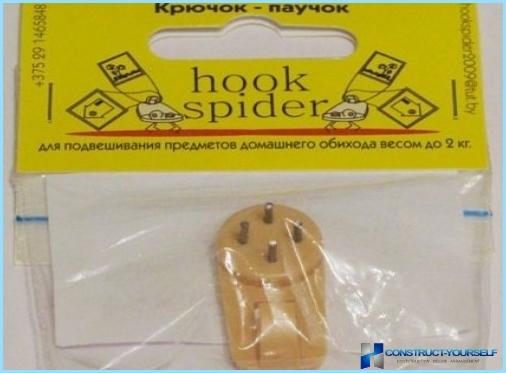
Replacement this method is the hook and the spider. Instead of the screws included in the wall, there are several thin and sharp pins. They enter the wall at a shallow depth, securely anchored, but almost without damaging the surface itself. This method is not always effective, because it would be hard to gain a foothold on concrete walls.
The last method is to nail. It is simple and practical, providing a good fixation. But it spoils the surface of the wall and is not suitable for many materials.
Among the simplest methods these options are the most accessible and widespread. They have a number of drawbacks, but they can realize any man. This makes them very popular for such tasks.
Complex methods of fixation of paintings ↑
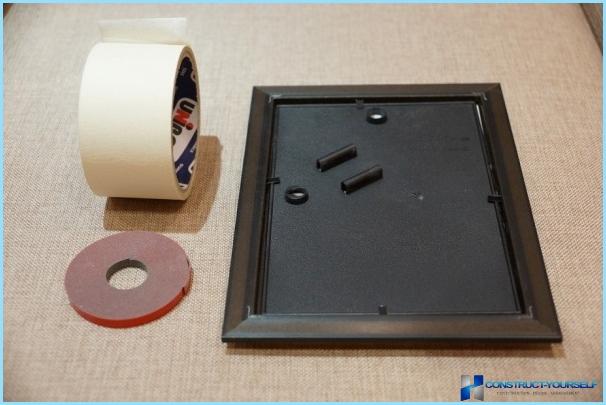
Complicated methods are different from simple two nuances — the complexity of installation and reliability. They allow you to lock the picture in the long term, having a secure bond with the surface behind. Among them celebrate:
- Liquid nails
- Foam double-sided tape
- Polymer clay
- Dowels
- System Command
Although their use is not so difficult, significantly complicates the installation that creates a permanent fixation. In other words, by setting only once, in the future you can’t change the location of the picture, adjust it or drop below. Therefore, the first installation must be done by a professional, using instruments for determining tilt angle and the optimal location of this element of decor.
The first method is to use liquid nails — a special adhesive that allows tightly to glue surfaces together. It is easy to use and installation may be on any surface regardless of the weight of the picture, the installation location, surface, and other factors.
The second expandable tape. This tape bonds quickly to the surface due to chemical reaction. But its features are the same as glue — it is attached only once and for a long time. But don’t use it on textured Wallpaper, and other surfaces with non-uniform coverage, the quality of fixation will be low.
Next is polymer clay. It leaves no greasy residue and allows you to capture picture of any weight and size. However, it freezes for a long time, resulting in reliable mounting on any surface.
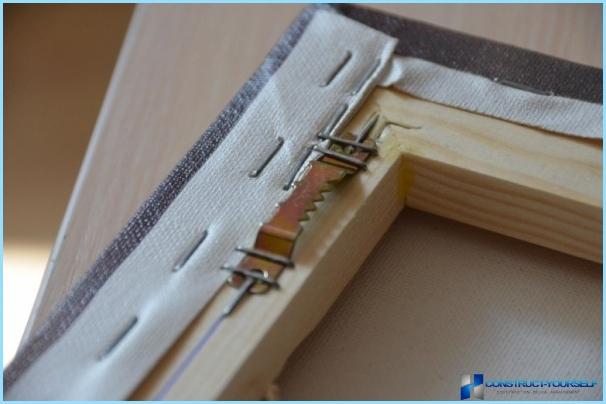
Then used dowels. They are often used for such tasks, after all, provide a secure and removable mounting for such items. The dowels are plastic or wooden products locating in the wall. The picture openings are created or placed special elements, the engaging protrusion.
Fastening system Command is rather simple and available method, although used by professionals. It is a system of sticky residue on the wall and painting. The complex is similar clamps allow you to install removable attachment to the surface, optionally removing it.
These allow for the long term to fix the picture, some of them provide a removable connection. It should take into account when choosing.
Rules of installation of paintings ↑
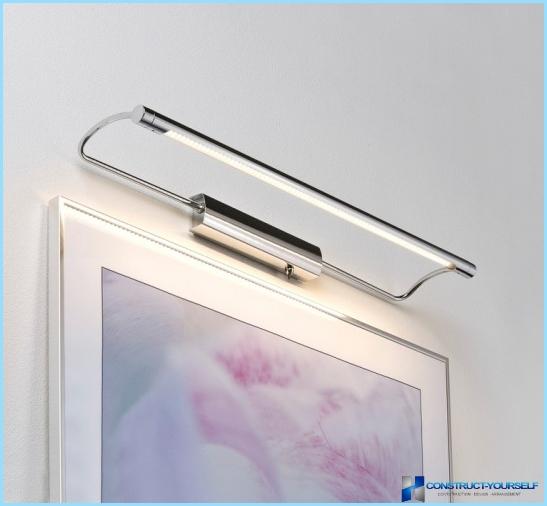
However, the method of fixing must go with the correct setting of the picture. Here we are talking not only about technical but also about the location, inclination and the many nuances required to accommodate such a decor element. During installation it is important to consider the following points:
- The light
- Height from floor
- Distance to the surrounding
- The angle of inclination
Although the illumination for the picture is optional, good lighting is important for the perception of such elements. As for height, you need to install it on the same level with the visitors to hit the review.
The tilt angle should be chosen according to the height at which the located picture. If you install a module, install its components close to the wall.
How to hang multi panel canvas ↑
Modular pattern — a common and inexpensive option that allows you to easy fill wall space with a beautiful landscape or picture. They are compiled into a single image that has a pleasing and stylish look.
However, modular paintings have their own installation requirements. They should just stay in their seats without any slopes and irregularities to create a total image. Therefore, the installation here is quite complex and requires appropriate measuring instruments. The installation is close to the wall, because the angle here must be zero.
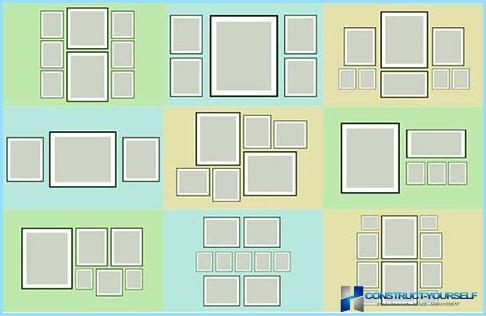
Modular paintings will fit the following installation methods:
- Double-sided tape
- Liquid nails
- Dowels
- Polymer clay
- System Command
It is recommended to use a system of Velcro or a dowel, because the error can be corrected painting or swap them around.
This approach will diversify the room a nice combination of several paintings, folding into a single image.
Hang a picture on the wall is quite simple, it has lots of tools and methods. However, it is necessary to consider not only the method of attachment, but also the tilt angle, the height at which the displayed images, and many other nuances. This will allow to achieve an optimal result, making the picture an indispensable part of the premises.
And this video shows a special set used for the installation of paintings at home. It is also used for installation, combining several types of mounting elements in a single complex:

